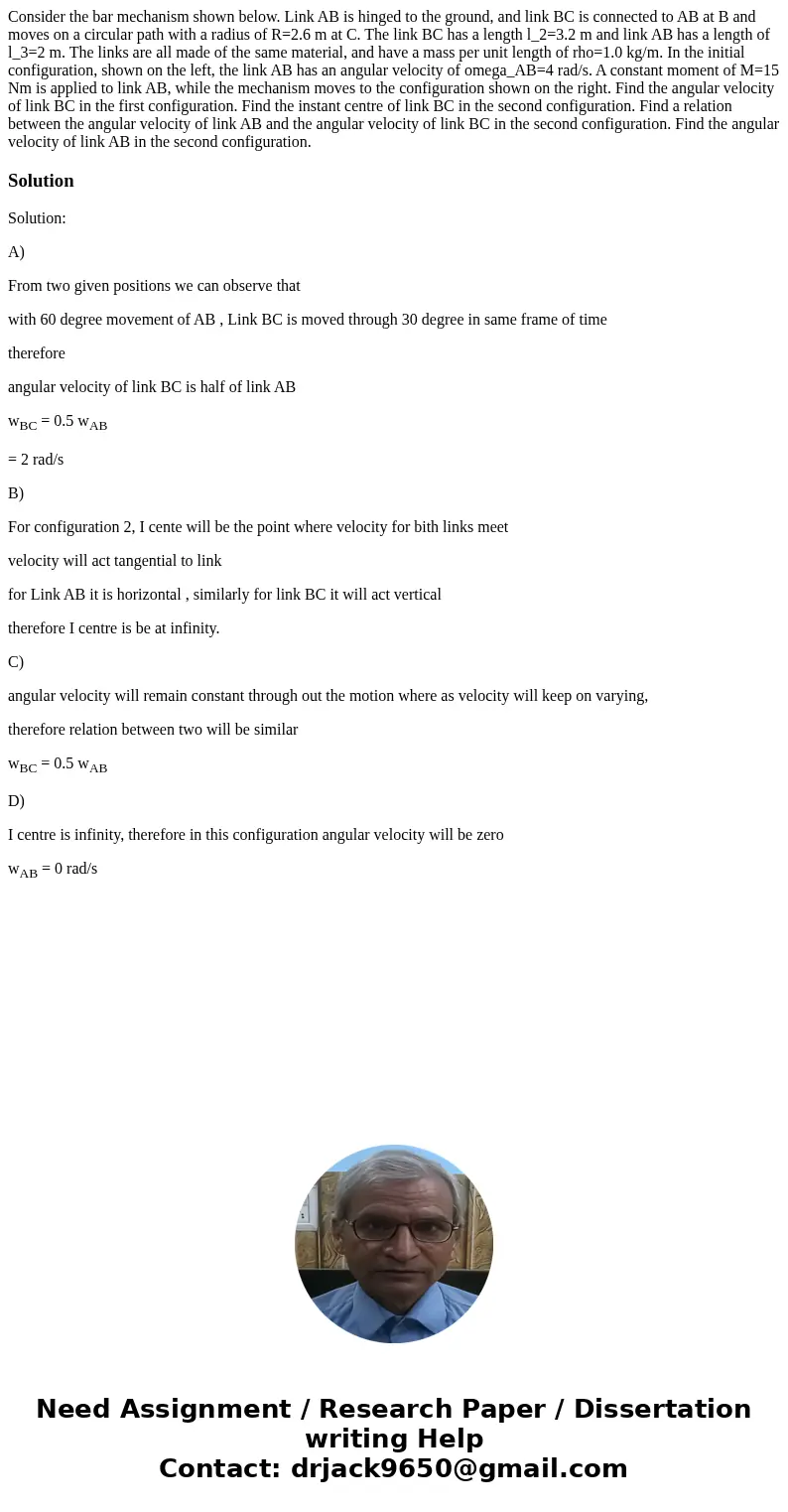Consider the bar mechanism shown below Link AB is hinged to
Consider the bar mechanism shown below. Link AB is hinged to the ground, and link BC is connected to AB at B and moves on a circular path with a radius of R=2.6 m at C. The link BC has a length l_2=3.2 m and link AB has a length of l_3=2 m. The links are all made of the same material, and have a mass per unit length of rho=1.0 kg/m. In the initial configuration, shown on the left, the link AB has an angular velocity of omega_AB=4 rad/s. A constant moment of M=15 Nm is applied to link AB, while the mechanism moves to the configuration shown on the right. Find the angular velocity of link BC in the first configuration. Find the instant centre of link BC in the second configuration. Find a relation between the angular velocity of link AB and the angular velocity of link BC in the second configuration. Find the angular velocity of link AB in the second configuration.
Solution
Solution:
A)
From two given positions we can observe that
with 60 degree movement of AB , Link BC is moved through 30 degree in same frame of time
therefore
angular velocity of link BC is half of link AB
wBC = 0.5 wAB
= 2 rad/s
B)
For configuration 2, I cente will be the point where velocity for bith links meet
velocity will act tangential to link
for Link AB it is horizontal , similarly for link BC it will act vertical
therefore I centre is be at infinity.
C)
angular velocity will remain constant through out the motion where as velocity will keep on varying,
therefore relation between two will be similar
wBC = 0.5 wAB
D)
I centre is infinity, therefore in this configuration angular velocity will be zero
wAB = 0 rad/s

 Homework Sourse
Homework Sourse